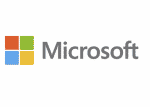Chargeback reversals are a significant concern for businesses of all sizes. Originally designed as a consumer protection mechanism against fraudulent transactions, chargebacks are also abused by fraudsters, leading to lost revenue, damaged reputations, and operational headaches for businesses. However, chargeback reversals can refund the money lost from a fraudulent chargeback. And with the right approach, it’s possible to successfully contest and reverse chargebacks.
Below are effective strategies for navigating the chargeback reversal process so you can protect your business.
Understanding the Chargeback Process
The chargeback process begins when a customer disputes a charge on their credit card, leading to a formal investigation by the card issuer. If the dispute is resolved in the customer’s favor, the transaction is reversed, and the merchant is debited for the transaction amount plus additional fees. Reasons for chargebacks include unauthorized transactions, non-receipt of goods or services, and dissatisfaction with the product or service received.
Steps to Successfully Reverse a Chargeback
Step 1: Understand the Urgency
The first step in responding to a chargeback notice is recognizing the critical importance of time. Merchants typically have a limited period, often between 7 to 21 days, to respond once they receive a notice. Failing to act within this timeframe can result in the chargeback being upheld by default, with little to no chance for reversal. Immediate action is crucial.
Step 2: Analyze the Chargeback Reason Code
Each chargeback notice comes with a reason code that specifies the customer’s complaint, such as unauthorized transactions, non-receipt of goods or services, or dissatisfaction with the product. Understanding this code is essential to winning a chargeback reversal as it guides the type of evidence you need to gather to dispute the chargeback effectively.
Step 3: Collect and Organize Chargeback Reversal Evidence
Promptly gather all relevant documentation related to the disputed transaction. This may include:
- Sales receipts or invoices
- Proof of delivery or service provided
- Correspondence with the customer
- Product descriptions and images, as presented at the time of purchase
- Any terms and conditions agreed upon at the time of sale
Organizing this evidence systematically can strengthen your chargeback reversal case when submitted to the bank or payment processor.
Step 4: Draft a Concise and Factual Chargeback Reversal Request
With your evidence at hand, prepare a chargeback rebuttal letter requesting a chargeback reversal that clearly addresses the chargeback reason code and explains why a chargeback reversal is appropriate. Your rebuttal should be factual, concise, and directly linked to the evidence provided. Highlight any terms and conditions, demonstrate the legitimacy of the transaction, and refute the customer’s claim with clear proof.
Step 5: Submit Your Response
Once your evidence and rebuttal letter are ready, submit them to the issuing bank or payment processor as quickly as possible. Ensure that your submission meets any specific guidelines or formats required by the bank or card network. It’s also advisable to keep copies of all communications and submissions related to the chargeback reversal request.
Step 6: Follow Up and Monitor Progress
After submitting your dispute, monitor the situation closely. Payment processors and banks often have their timelines and processes for handling requests for a chargeback reversal. Stay in contact with your payment processor or acquiring bank to track the progress of your dispute and be prepared to provide additional information if requested.
Avoiding Chargeback Reversal: Some Best Practices for Minimizing Chargebacks
While obtaining a chargeback reversal is possible, preventing chargebacks is preferable. Here are some strategies to reduce the risk of chargebacks:
- Transparent Communication: Clearly describe your products or services to set realistic customer expectations. Ensure your contact information is easily accessible for customer inquiries.
- Clear Billing Descriptors: Use a billing descriptor that customers will recognize on their statements to reduce confusion and prevent unwarranted disputes.
- Large Data Lakes: Implement fraud prevention methods that integrate as much organizational data as possible when making a fraud determination.
- Flexible Return Policies: Offering a clear, fair return policy can encourage customers to resolve their dissatisfaction directly with you instead of initiating a chargeback.
- Automated chargeback solution: Consider enlisting the services of a company that specializes in chargeback reversal. The top chargeback protection platforms will combine human and automated solutions to process data and evaluate orders.
Conclusion
Successfully reversing chargebacks requires a proactive and informed approach. By understanding the chargeback reversal process, responding promptly with compelling evidence, and leveraging professional expertise when necessary, businesses can significantly increase their chances of winning chargeback disputes. Every chargeback reversal helps not only your bottom line but the trust of your customers.





























